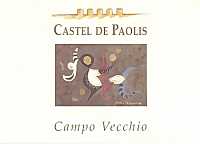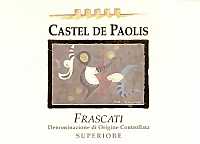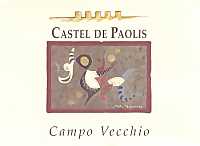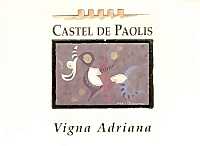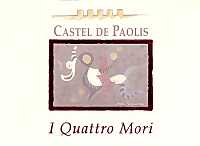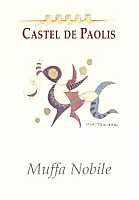|
Italian enology is living in the last twenty years a moment of renewal and
splendor. After a very long time characterized by productions based on quantity
- in which quality was a factor found in few viticultural contexts only - in
every region of Italy can today be found remarkable quality productions. Regions
and wine areas which were once scarcely considered, have been capable of proving
their great potentials, revaluating the unique expression of every territory, of
their grapes and wines. Among these regions certainly is found Latium, that in
recent times has been successful in radically change the image of its wines and
their quality, once simply considered as “ordinary”, have today become real
“outsiders”. The job done in Latium is exemplar in many aspects, from the
revaluation of local grapes to the introduction of new varieties, from the
drastic change in the production techniques to the way of communicating wine
to the world.
|
| 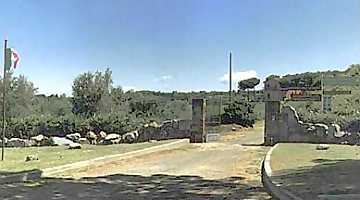 |
| The entrance of Castel de Paolis winery |
|
Among the wineries which strongly contributed to the promotion of the image of
wines from Latium there is Castel de Paolis, owned by the Santarelli family,
which in few years has been capable to bring to the highest level the Frascati
wine, one of the most famous wines of Castelli Romani. The winery takes
its name from one of the most important fortresses for the control of Roman
countrysides during Medieval times. Castel de Paolis fortress was built upon the
ruins of a villa dated back to Roman times that, thanks to its strategic
position, allowed the control of an ancient road connecting Rome to
Castromoenium. In past times it was believed Castel de Paolis hill was
the ancient site of Castromoenium, however recent studies have confirmed the
ancient Roman colony corresponds to the present city of Marino. Also the lands
in which today are found the vineyards of Castel de Paolis were crossed by a
paved road connecting the Castrimense road to the Latina road.
Castel de Paolis winery is located in the commune of Grottaferrata, few tens of
kilometers away from Rome - in the Castelli Romani area and in the
Denominazione d'Origine Controllata territory of Frascati - covers a
total area of twelve hectares completely destined to the cultivation of
vineyards. The winery is located in a hilly position at an altitude of 270
meters in soils of volcanic origin. The history of Castel de Paolis begins in
1985, when Giulio Santarelli, together with his wife Adriana Croce, rediscovers
the passion of the art of making wine, a passion which will soon bring him to
dedicate all of his time to the family winery. The fundamental event will take
place in 1985, when Giulio Santarelli meets professor Attilio Scienza, of Milan
University and at those times director of the prestigious Agricultural Institute
of San Michele all'Adige. Professor Attilio Scienza, during a visit at Castel de
Paolis, suggested Giulio Santarelli to resume in his vineyards the cultivation
of the ancient autochthonous varieties which in past times were capable of
making everywhere famous the wines of Castelli Romani, but unfortunately
at those times were not as successful as they used to be.
|
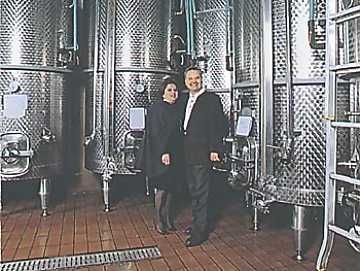 | |
| Mr. and Mrs. Santarelli in their cellar | |
|
That was the beginning of a long and precious research and experimentation
activity, during which were uprooted the Malvasia di Candia and Trebbiano
Toscano vineyards of Castel de Paolis. They then proceeded with the search of
the old vines of the area: Malvasia Puntinata del Lazio, Bombino Bianco,
Cacchione, Bellone, Passerina, Pecorino, Grechetto and Romanesca, at those times
rare in the vineyards of Castelli Romani. When they finally found the
varieties, it was planted an experimental vineyard which gave good results. They
then decided to extend the varieties of grapes with which make their
experimentation, by using the international varieties: Sauvignon Blanc,
Chardonnay, Syrah, Cabernet Sauvignon, Viognier, Sémillon, Pink Muscat, Golden
Muscat, Roussanne, Merlot and Petit Verdot. The experimental phase - which ended
in 1992 - has also led to the creation of a winery equipped with the most
advanced technologies and in which were exclusively vinified the grapes coming
from the experimental vineyards under the technical supervision of winemaker
Lorenzo Peira.
At the end of the experimental phase, Castel de Paolis winery was ready to
let the results of this fundamental research activity meet the world, and
catching since the very first moments a high interest from consumers and wine
lovers. Wines belonging to the Frascati DOC and produced by Castel de Paolis
were so impressive as to believe they belonged to another appellation: the new
history of Frascati and the wines of Castelli Roman was just begun. A result -
which is still today one of the most interesting in Latium - obtained by joining
tradition and innovation in the essential and fundamental role of
experimentation, while proving that, given favorable conditions and right
viticultural practices, it is possible to keep and improve the enological
tradition of a territory. The cellar was supervised up to 2003 by winemaker
Franco Bernabei, whereas today it is led by winemaker Carlo Corino.
The vineyards of Castel de Paolis winery are cultivated according to the
principles of organic agriculture, with a density of 5,500 plants per hectare
and each vine providing a maximum of 1.5 kilograms of grapes. Wines are
currently exported in the United States of America, Japan, Australia, United
Kingdom, Germany, Denmark, Belgium, Austria, France and Switzerland. The
production is based both on white and red wines, completed by the interesting
sweet wines Rosathea, produced with Pink Muscat, Frascati Cannellino and Muffa
Nobile, produced with Sémillon and Sauvignon Blanc grapes. The production of
white wines is composed of Frascati Superiore DOC, Campovecchio Bianco, Vigna
Adriana - one of the flagship wines of Castel de Paolis and produced with
Malvasia Puntinata del Lazio, Viognier and Sauvignon Blanc - and Selve Vecchie,
produced with Chardonnay and Sauvignon Blanc grapes. The production of red
wines is composed by Campovecchio Rosso - produced with Syrah, Cesanese
d'Affile, Montepulciano and Sangiovese grapes - and I Quattro Mori, produced
with Syrah, Merlot, Cabernet Sauvignon and Petit Verdot grapes, aged for 18
months in barrique.
|


